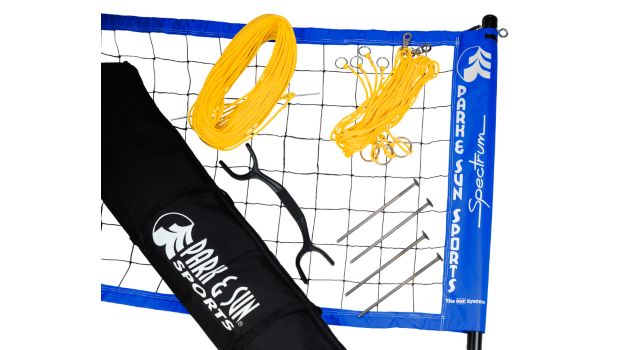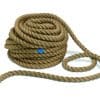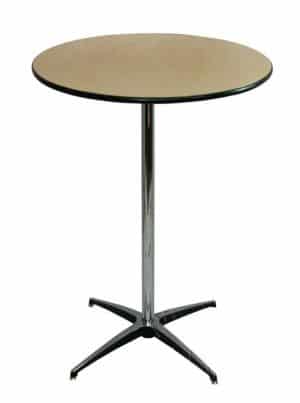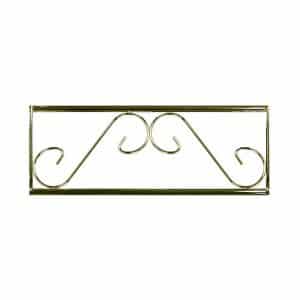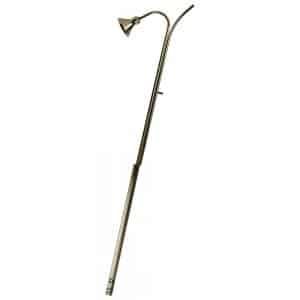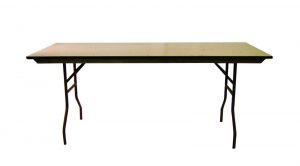Volleyball Set
$39.95
This is a regulation size volleyball set which includes the net with attached poles, 2 rope tie-downs, 4 stakes, boundary lines, a volleyball, and a carrying bag. The poles can be adjusted to amateur height, women’s professional height, or men’s professional height. This is a GREAT volleyball set and can turn a good party into a great party!
BASIC VOLLEYBALL RULES
Scoring:
Games are usually played to 11 or 15 points and should be determined before play
begins. Court switches or exchanging courts occur at specified times during the game. In a 15-point game, courts are exchanged each time the total number of scored points is a multiple of 5. In an 11-point game, teams exchange playing courts each time the total number of scored points is a multiple of 4.
Rally Point Scoring: In rally point scoring, either the serving or receiving side scores a point whenever a team fails to serve properly, return the ball, or commits any other fault.
Ball Play:
• Ball in: The ball is “in” when, after being put in play, its first contact with the ground is on the playing court or a boundary line.
• Ball out: The ball is out when after being put in play, its first contact with the ground is completely outside the playing court.
– It touches an object outside the court, an overhead object or a person out of play.
– It touches the antennas, ropes, posts or the net outside the antenna.
Team Contacts:
• Each team is entitled to a maximum of three contacts to return the ball to the opponents.
• A player may not contact the ball consecutively, except during or after a block or at a team’s first contact.
Contact Characteristics:
• A player may touch the ball with any part of the body.
• The ball must be contacted cleanly and not held, lifted, pushed, caught, carried or thrown.
• The ball cannot roll or come to rest on any part of a player’s body.
• An exception is allowed during the defensive play of a hard driven ball. At this time, the ball may be momentarily lifted or pushed.
Attack Hit:
• All actions directing the ball toward the opponent’s playing area, except the acts of
serving and blocking, are attack hits.
• You cannot contact the ball within the playing space of the opponents.
Block:
• Blocking is an action that deflects the ball coming from the opponent by a player
and/or players at the net.
• For doubles and triples, blocking does constitute as a contact and any player may
make contact of the ball after the block.
• For four-person and six-person play, blocking does not constitute a team contact. Any player may make the first contact of the ball after the block.
Simultaneous Contact:
• When two blocking teammates touch the ball simultaneously, it is considered one
contact and any player may make next contact.
Faults:
• Assisted Hit: A player takes support from a teammate or any object in order to reach the ball.
• Double Contact: A player contacts the ball twice in succession or the ball contacts
various parts of the player’s body successively.
• Held Ball: A player does not cleanly contact the ball.
• Player/Net: It is a fault for the player or their clothing to touch any part of the net.
• Reaching beyond the net while blocking. A player may touch the ball beyond the net provided the player does not interfere with the opponent’s play before or during the
attack-hit.
• Player may cross the center line, either before, during or after legal play of the ball,
provided this does not interfere with the opponent’s play.
• While opposing players are not required to avoid the ball or the player, they cannot
intentionally interfere with any legal attempt to play the ball on their court.


